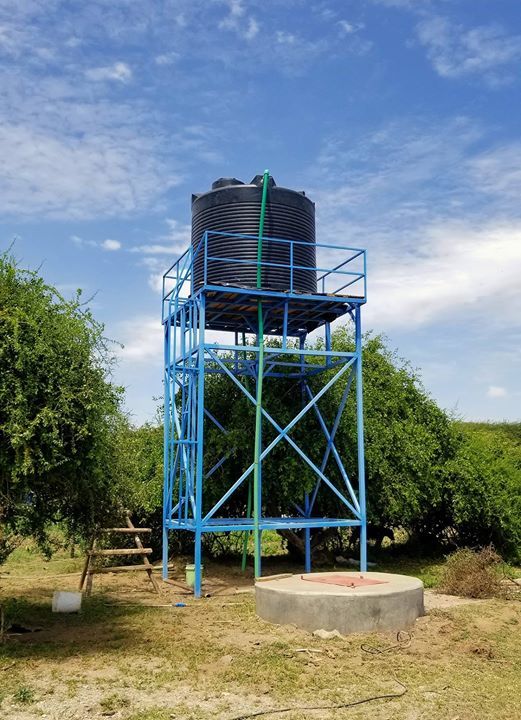This is a modern world but there are still some part of the world where clean and reliable supply of water is challenging. Issues such as water shortages during dry seasons, low water pressure, or even interruptions in municipal water supply cause inconvenience and disrupt daily life. Water storage tanks evolves as an ultimate solution for these situations. Whether you need water for household use, agricultural activities, industrial processes, or even emergency preparedness, these tanks are effective way to store and access water easily. But there so many options available in the market, it is not easy to choose one of the perfect tank among them. With this guide, we are going to simplify the process, know more about tanks, their applications and their types as well.
What Are Water Storage Tanks?
Water tanks are nothing but simply containers that are specially designed to store water for different purposes. however, they play the role of reservoirs where water is collected, stored and then distributed or used. Not only this, but these tanks are manufactured by using durable materials which prevents contamination and keep water sage for intended uses. As per your needs, plastic water tanks are available in different size, materials and designs as well.
Types of Water Storage Tanks

There are different types of tanks, it is important to know the type of tanks. This helps you to pick one that suits best your needs.
1.Plastic or Polyethylene Tanks
This type of tanks are lightweight, affordable and easy to install. These tanks are built from polyethylene as they are resistant to rust and corrosion. This makes them best option to store potable water. these tanks are available in different sizes and are mostly used for residential settings.
2.Steel tanks
The other type of stainless-steel water tank is steel tanks. These tanks are popular to offer strength and durability. They can be galvanized so that they resist corrosion and they are suitable for large-scale applications such as industrial use or water storage for farms. Not only this, but they are heavier and are more expensive than plastic tanks.
3.Concrete tanks
The third type of plastic water tanks is concrete tanks. These tanks are robust and long-lasting, which makes them perfect choice for underground installations. Concrete tanks are often used for rainwater harvesting or region having high water demands. These tanks are durable but require professional installation and maintenance.
4.Fiberglass tanks
The next type of tanks are fiberglass tanks. These tanks are lightweight, strong and resistant to corrosion. These tanks are suitable for both above ground or underground uses. These tanks are generally used for storing chemicals, wastewater or potable water.
5.Bladder tanks
The next type of tanks are bladder tanks. These tanks are flexible and portable. These tanks are made up of strong fabric and best for temporary water storage or emergency solutions. Not only this, but these tanks are used in disaster relief operations or remote areas.
These are some of the types of storage tanks. Let’s get to know about their applications.
Applications of Water Storage Tanks
There are different purposes of tanks as per the needs of users. Here are some of the common applications:
- Residential use: household uses water storage tanks to store potable water for daily needs such as drinking water, cooking and bathing.
- Agricultural activities: farmers are dependant on water tanks to irrigate crops, water livestock and store rainwater. With tanks, farming operations becomes continuous even during dry spells.
- Industrial processes: there are many of the industries who uses water storage for manufacturing processes, cooling systems and wastewater storage.
- Rainwater harvesting: tanks are also used for collecting and storing rainwater. Harvested water can be used for non-potable purposes such as irrigation, flushing toilets or cleaning.
- Emergency preparedness: natural disasters are some emergencies where water tanks acts as a reliable source of clean water.
Often underrated, but water storage tanks are invaluable resource for ensuring a reliable supply of water irrespective of the circumstances. Once you understand different types of tanks, their applications and maintenance, you make an informed decision. Whether you want a tank for emergency, farming operations or household needs, there is always a tank for your need. With proper planning and care, these tanks can offer long-lasting solution to many water related challenges.
FAQs:
1.What size water storage tank should I buy?
It totally depends on your needs. If you are looking for residential use then you can pick 500 to 2,000 liters while looking for agricultural or industrial purposes you can opt for tens or thousands of litres.
2.How can I maintain my water storage tank?
One of the most important key is to run regular maintenance to ensure longevity and cleanliness. However, it includes periodic cleaning to remove sediment, inspecting for leaks and ensuring all fittings and valves are in good condition.
3.Are water storage tanks eco-friendly?
Yes there are many modern tanks that are designed with eco-friendly materials. For example- using water tanks for rainwater harvesting which helps to conserve water and reduce the reliance on municipal supply.



